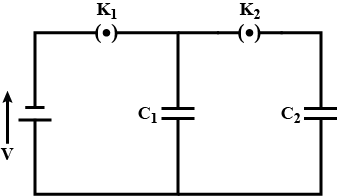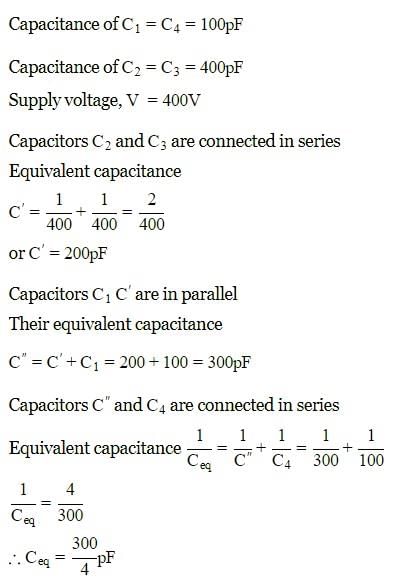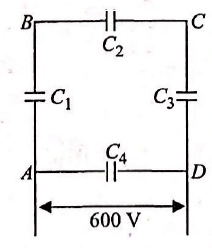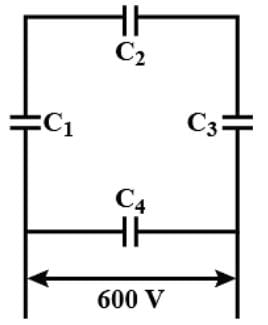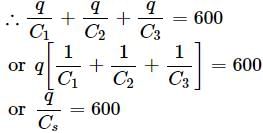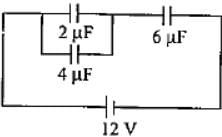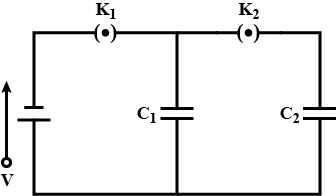Test: Combination of Capacitors (NCERT) - NEET MCQ
10 Questions MCQ Test - Test: Combination of Capacitors (NCERT)
Three capacitors each of capacity 4 μF are to be connected in such a way that the effective capacitance is 6 μF. This can be done by
The equivalent capacitance for the network shown in the figure is
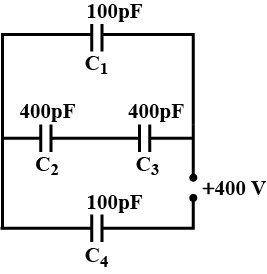

A network of four 20μF capacitors is connected to a 600V supply as shown in the figure.
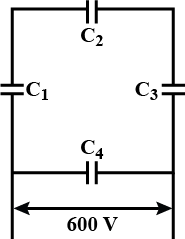
The equivalent capacitance of the network is

The equivalent capacitance of the network is
The charge on 3μF capacitor shown in the figure is
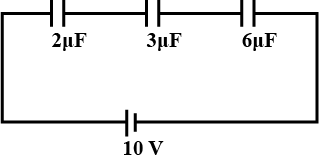
Minimum number of capacitors each of 8μF and 250V used to make a composite capacitor of 16μF and 1000V are
A capacitor of capacitance C1 is charged to a potential V and then connected in parallel to an uncharged capacitor of capacitance C2. The final potential difference across each capacitor will be
Two capacitors of 2 μF and 4 μF are connected in parallel. A third capacitor of 6 μF is connected in series. The combination is connected across a 12 V battery. The voltage across 2 μF capacitor is
Two identical capacitors are joined in parallel, charged to a potential V, separated and then connected in series, the positive plate of one is connected to the negative of the other. Which of the following is true?
In the given circuit, initially K1 is closed and K2 is open. Then K1 is opened and K2 is closed. If q1′ and q2′ are charges on C1 and C2 and V1 and V2 are the voltage respectively, then
